Is there anything better than a refreshing tuna salad with avocado? This simple and nutritious dish combines the rich flavors of tuna with the creamy goodness of avocado, creating a meal that’s as delicious as it is healthy. Whether you’re preparing a classic cold tuna pasta salad recipe or experimenting with healthier alternatives, the combination of tuna and avocado offers a fresh twist on a beloved favorite. From Matthew McConaughey’s famous recipe to keto-friendly variations, there’s something here for everyone. Discover how to make the most out of your tuna salad with avocado, ensuring your meals are both satisfying and packed with flavor. Let’s dive into the world of tuna and avocado, where every bite is a delightful experience!
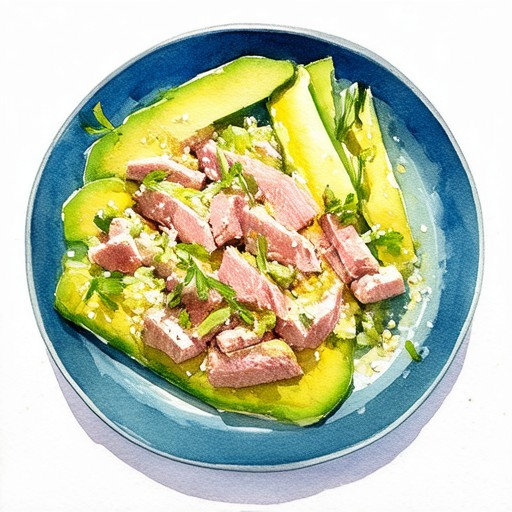
Does Avocado Go Well with Tuna Salad?
Yes, avocado makes a fantastic addition to tuna salad, transforming it into a flavorful and nutritious dish. Here’s how you can enhance your tuna salad with avocado:
- Creamy Texture:** Avocado adds a luscious, creamy texture to the tuna salad, making it richer and more satisfying.
- Flavor Enhancement:** The mild, buttery taste of avocado complements the earthy flavors of tuna, creating a harmonious balance.
- Healthy Fats:** Avocado is packed with healthy fats, including monounsaturated fats, which are beneficial for heart health.
- Easy to Prepare:** Incorporating avocado into tuna salad is simple—just mash a little and mix it in for a creamy texture.
For the best results, ensure your avocado is ripe and thoroughly mashed. You can also add a squeeze of lemon juice and a sprinkle of red pepper flakes for extra zing. Enjoy your upgraded tuna salad!
What’s in Matthew McConaughey Tuna Salad?
Matthew McConaughey’s tuna salad is a beloved dish that combines traditional ingredients with a unique twist. Here’s a breakdown of what typically goes into this classic recipe:
- Main Ingredient : The star of the show is premium yellowfin tuna, known for its rich flavor and tender texture. It’s the perfect base for creating a flavorful salad.
- Mayonnaise : A good-quality mayonnaise is essential to bind the ingredients together and add creaminess to the salad. It complements the earthy taste of the tuna beautifully.
- Mustard : A touch of mustard adds a tangy kick, balancing the richness of the tuna and mayo. It’s a classic addition that enhances the overall flavor profile.
- Pickles : Finely chopped pickles bring a crisp freshness to the salad, cutting through the richness of the tuna and mayo. They also add a nice tangy note.
- Onion : A small dice of onion contributes a subtle sweetness and helps mellow out the stronger flavors of the tuna and mayo.
- Celery : Chopped celery adds a crunchy texture and freshness to the salad, complementing the creamy elements perfectly.
- Lemon Juice : A squeeze of fresh lemon juice brightens the salad, adding a refreshing zing that ties all the flavors together.
- Salt and Pepper : These are used to season the salad to perfection, ensuring every bite is flavorful and well-balanced.
- Optional Add-Ons : Some recipes opt to add a bit of garlic powder or a sprinkle of paprika for extra depth, while others might include capers or olives for a briny kick.
The recipe is often served on toasted bread or with a side of chips, making it a delightful meal option. For those looking to elevate their tuna salad game, exploring variations like adding avocado or incorporating herbs can take it to the next level.
Want to try making it yourself? Check out our Matthew McConaughey-inspired tuna salad recipe for a step-by-step guide to crafting this delicious dish. Don’t forget to share your thoughts or try our Camila Alves version if you’re feeling adventurous!
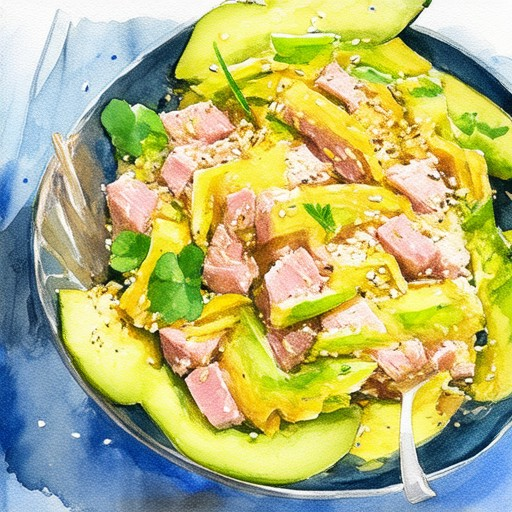
What Mixes Well with Canned Tuna?
Canned tuna is a versatile ingredient that can be incorporated into various meals. Here are some great mix-ins and meal ideas:
- Salads: – Mixed greens – Cherry tomatoes – Cucumber – Red onion – Kalamata olives – Capers – Feta cheese
- Simple Meals: – Rice or quinoa – Steamed vegetables (broccoli, carrots, green beans, etc.) – Lemon-tahini dressing
- Sandwiches: – Whole grain or sourdough bread – Spinach or lettuce – Avocado – Pickles or mustard
- Wraps: – Tortilla – Fresh vegetables (lettuce, tomato, cucumber) – Herbs (parsley, cilantro) – Hummus or sriracha
- Pasta Dishes: – Pasta shells (farfalleloni) – Cherry tomatoes – Mozzarella cheese – Fresh basil – Vinaigrette
- Stuffed Peppers: – Rice or quinoa – Black beans – Corn – Cheddar or mozzarella cheese – Spices
- Power Bowls: – Sweet potatoes – Kale or arugula – Chickpeas – Almond butter – Tahini-lemon dressing
- Stir-Fries: – Snap peas – Bell peppers – Soy sauce or teriyaki sauce – Sesame oil – Tofu or tempeh
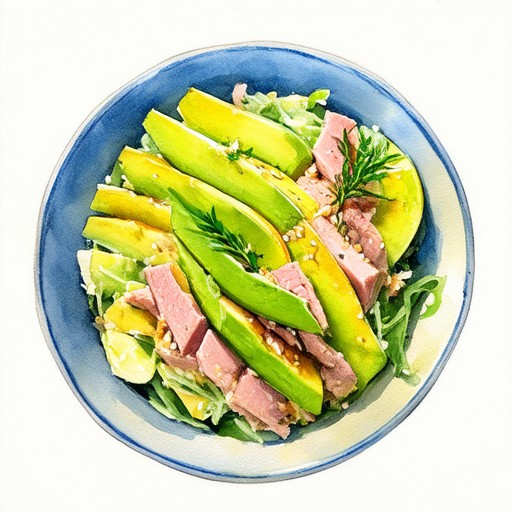
Do Tuna and Avocado Go Together in the Fridge?
To determine whether tuna and avocado can be stored together in the fridge, it’s essential to understand their individual storage requirements and how they interact:
- Separation is Key: While tuna and avocado can technically coexist in the fridge, it’s better to store them separately to maintain their respective qualities. Tuna may absorb odors from nearby foods, affecting its flavor, while avocado can release ethylene gas, which speeds up ripening and browning.
- Optimal Temperature: Keep both tuna and avocado refrigerated at 35-40°F (2-4°C). This temperature slows down enzymatic activity, preserving freshness and preventing spoilage for extended periods.
- Wrapping Techniques: Wrap tuna tightly in plastic wrap or place it in an airtight container to protect it from odors. For avocado, use airtight containers or wrap it in plastic film to reduce exposure to air and slow browning.
- Lemon Juice for Avocado: To enhance avocado storage, consider drizzling a small amount of fresh lemon juice before refrigerating. This helps inhibit enzymatic browning and extends its shelf life by 1-2 days.
By following these tips, you can safely store tuna and avocado together in the fridge, ensuring both remain fresh and flavorful for up to 2-3 days.
Why Not Put Avocado in the Fridge?
Avocados are best stored at room temperature to ripen properly. Refrigerating them can lead to overripening, causing them to become too soft or mushy. This can affect their texture and taste, making them less desirable for recipes that rely on a creamy consistency.
Additionally, the high oil content in avocados may lead to undesirable changes when refrigerated, such as oil separation or texture alterations. For optimal flavor and usability, it’s advisable to keep avocados at temperatures between 55-60°F (13-16°C), allowing them to ripen naturally without the risk of premature spoilage or texture degradation.
Moreover, avocados don’t require refrigeration for preservation due to their natural shelf life. Keeping them at room temperature ensures they ripen evenly and remain fresh for extended periods, making them a versatile ingredient for various culinary applications.
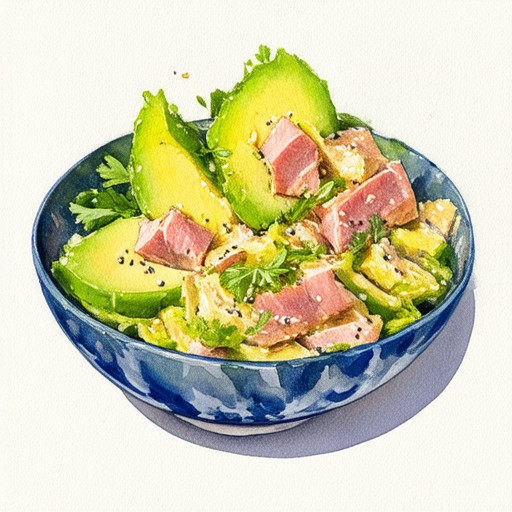
How Long Should You Keep Tuna Salad in the Refrigerator?
Tuna salad typically stays fresh for up to two days when properly stored in the refrigerator. This timeframe applies to homemade versions, which may include ingredients like mayonnaise, which can spoil quickly due to its dairy base. Store-bought tuna salads, often containing preservatives, may last slightly longer, but it’s still advisable to use them within a similar window to ensure safety.
Key factors affecting freshness include:
- Temperature: Keeping the fridge at or below 40°F (4°C) helps slow bacterial growth. Most refrigerators are set between 35-40°F, which is sufficient.
- Ingredients: The presence of mayonnaise and other dairy products can reduce the shelf life, necessitating closer monitoring.
- Storage Container: Use an airtight container to prevent exposure to bacteria and odors.
Always check for signs of spoilage, such as a sour smell, discoloration, or sliminess, before consuming the tuna salad. These indicators suggest it’s no longer safe to eat.

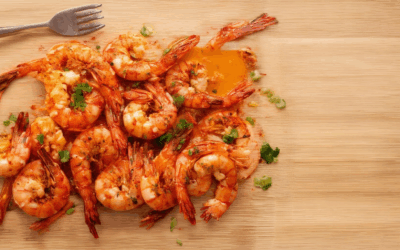
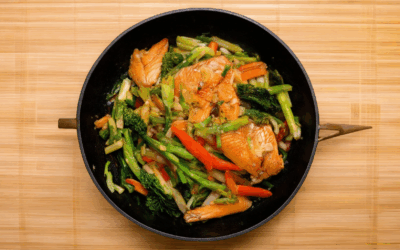
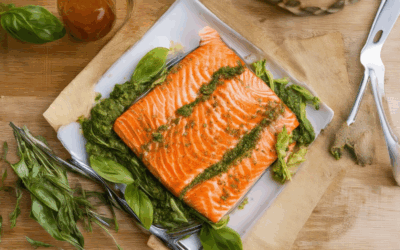
0 Comments